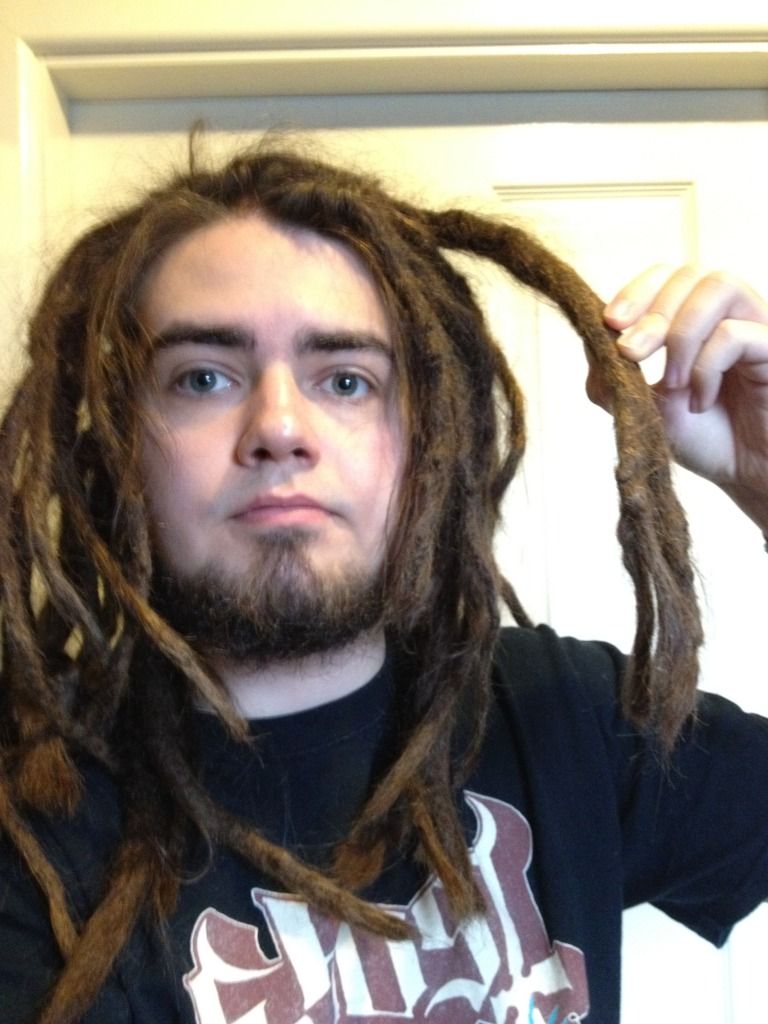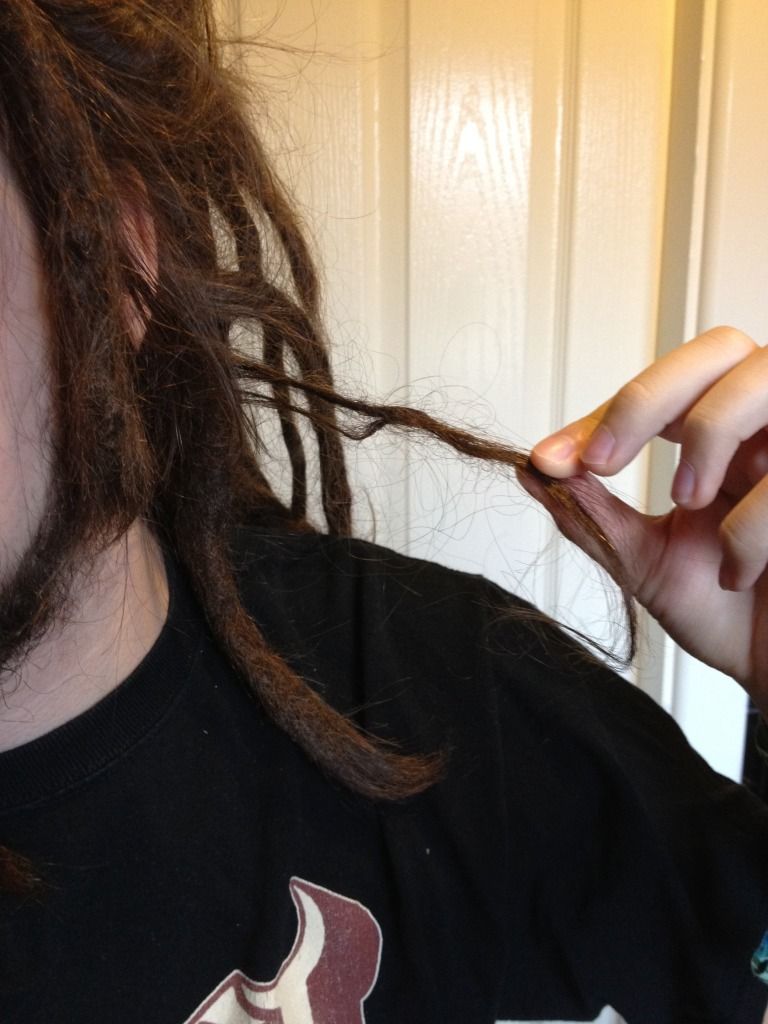I talk a little about helmets, facemasks and swimming further on, but I'll just cover something general first. Dreadlocks are warm. They're great insulators and excellent when the weather turns cold for the winter. But - not so good if you have an intensive workout schedule. Dreadlocks are a little like wearing a warm hat at all times, you can keep a little cooler by tying them back in a ponytail or with a headband, but you'll still be warmer than you would with normal hair. So while at the gym you'll get more sweaty from the heat and when you shower afterwards, as always, the dreads will take a long time to dry.
Dreadlocks are more obstructive than normal hair, it can affect the wearing of helmets, so this is something you'll need to consider. Normal hair can be squeezed under a helmet quite easily, but dreadlocks are thicker and tougher. It will vary from person to person as everyone has different dread thickness', length and quantity, but from first hand experience I can say that I have struggled to find helmets which will comfortably and safely fit my head. So this may possibly affect; cycling, horseback riding, motorcycle riding, some climbing and skiing etc. Removing the padding from helmets is usually the best you can do - the dreadlocks will make perfectly acceptable and comfortable padding by themselves.
Sleeping with Dreadlocks:
Something that gets asked alot is the impact that dreadlocks may have on swimming. Dreadlocks are often associated with surfing and surf culture so obviously you can take them out and get them wet, but there are a few things to be aware of. I'll break it down into two sections, salt water and chlorinated water.
Saltwater - Now saltwater is generally thought of as being good for dreads. It your hair frizzy and more prone to locking and the salt makes the hairs a little more abrasive and can help to lock and tighten the dreads. So saltwater is not a problem, you can swim and surf in the sea all you want. What you will need to remember is that the dreadlocks get heavier when they're wet. They soak up water a little like a sponge so they will make your head a little heavier. Only the dreads that are out of the water will have any added effect to you buoyancy - the dreads actually in the water will just float around - so it's not like they will make you sink.
When you dive underwater, the dreads will float around and can get in the way of your vision - like any long hair would, so it's recommended that you tie your hair back in some way so that you're able to see. It's also worth noting that it can be difficult to get diving masks to fit easily over your head when you have dreadlocks. It doesn't mean you can't wear them, it's just a little tricker to get a good tight fit. You have to put the mask on and get the straps through the dreads, then you'll need to try and tie your hair back afterwards.
Chlorinated water - It's not particularly great for dreads, but you can swim in pools without much bother apart from the points I mentioned earlier - they get heavier and can float in your face. The main issue I have with dreads in chlorinated water is that they get that sticky feeling accompanies swimming in pools. So you'll really want to give them a good wash afterwards, which often isn't easy with the showers they usually have at pools. Which moves me on to...
Drying - Something you will have to remember is that dreadlocks take a long time to dry. So you'll be dripping a long time after you get out of the pool or out of the sea. I recommend you remember to take a towel just for wrapping up your hair so that you don't drip everywhere while moving from the pool / sea to the shower.


